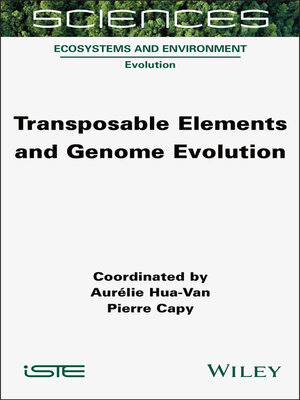
Sign up to save your library
With an OverDrive account, you can save your favorite libraries for at-a-glance information about availability. Find out more about OverDrive accounts.
Find this title in Libby, the library reading app by OverDrive.



Search for a digital library with this title
Title found at these libraries:
| Library Name | Distance |
|---|---|
| Loading... |
Since their discovery by Barbara McClintock in the mid-20th century, the importance of transposable elements in shaping the architecture, function and evolution of genomes has gradually been unveiled.
These DNA sequences populate nearly all genomes and are viewed as genomic parasites. They are mobile, capable of proliferating within genomes and also commonly travel between species.
These elements are mutagenic and are responsible for several human genetic disorders, but they also constitute a major source of genetic diversity. Some insertions have beneficial effects for the host and are selected for, giving rise to significant evolutionary innovations. Their dynamics within genomes are intricate, as are their interactions with other genome components. To limit their proliferation, the genome has evolved sophisticated defense mechanisms.
While researchers commonly use these elements as genetic tools, their identification in newly sequenced genomes remains a challenge due not only to their extensive diversity, but also their large copy numbers.







